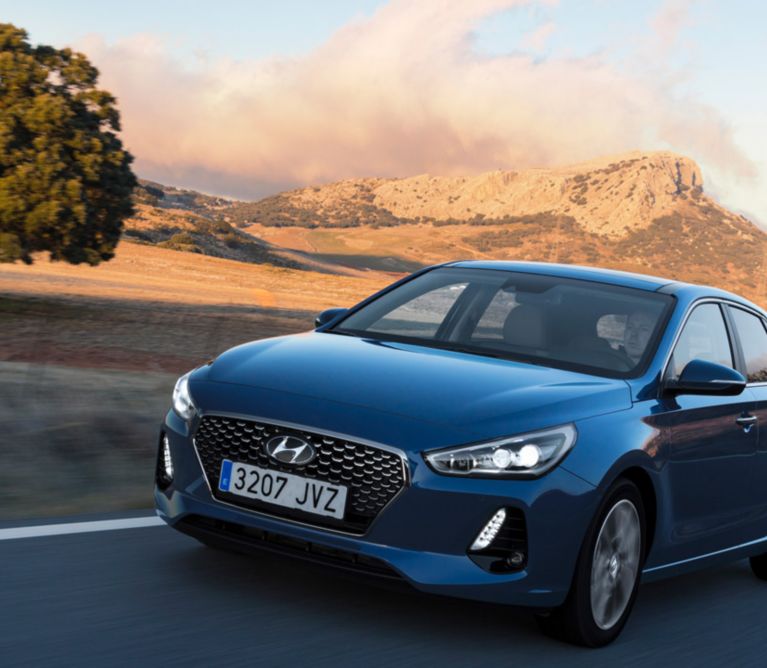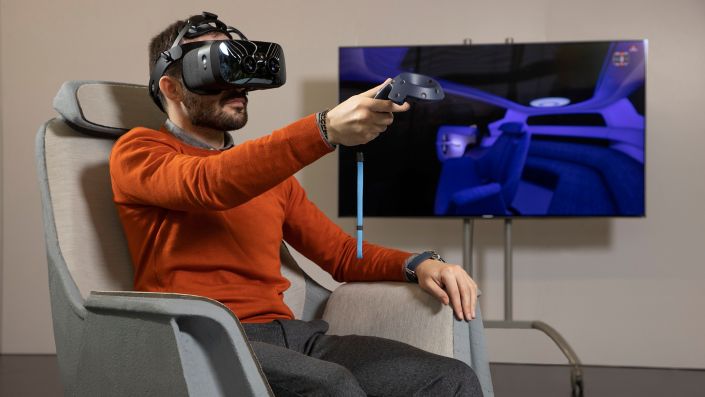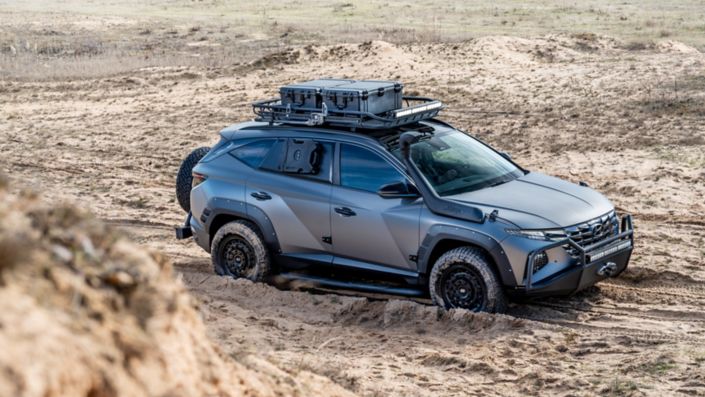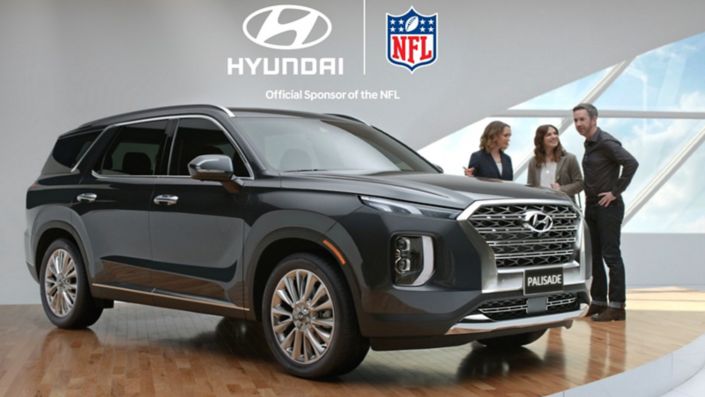As I peel back the curtains of my hotel room on a Monday morning, I’m met not by the blanket of snow that covers much of northern Germany at this time of year, but the bright blue skies of Marbella, where the sun never seems to set. It might be mid-January, but this southern Spanish city on the Costa del Sol continues to sparkle in the sunshine, like winter never happened. It is here that the Hyundai i30 Test Drive will take place, as over the course of a week, scores of journalists from around Europe will descend upon it for a dose of sun, sea and acceleration.
I make my way to Malaga Airport, where the automotive journalists would be gathering later in the morning to be handed a shiny set of keys for their car for the day: the New Generation i30. Soon they are sent on their way to Marbella for their first test drive.
I make my way to Malaga Airport, where the automotive journalists would be gathering later in the morning to be handed a shiny set of keys for their car for the day: the New Generation i30. Soon they are sent on their way to Marbella for their first test drive.
Press material
Last week the international press went to Marbella for the New Generation i30 Driving Experience to get behind the wheel for the first time. Our blogger David went along to see behind the scenes.
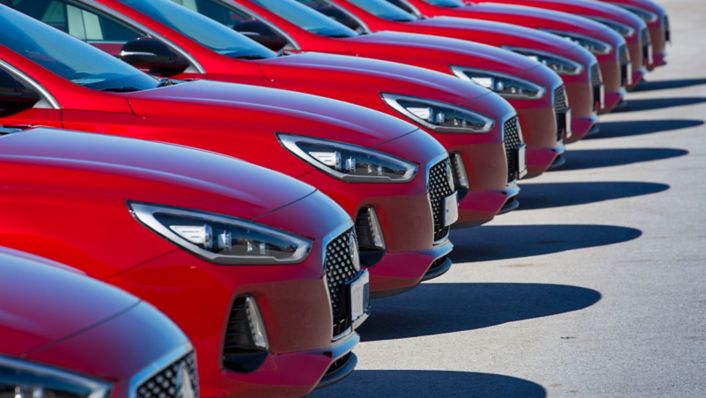
Driving through the hills on a warm January morning
Malaga Airport is around an hour away from Marbella, and the route is full of long, winding roads lined with green fields and mountains. Along the way we pass the White Towns of Andalusia, with their whitewashed walls and red-top roofs. Since the mid-1990s, traffic density has doubled on the Costa del Sol, so unless you live in the centre of a town or near a local train station, private transport is essential. The New Generation i30 proved to be more than up to the task, navigating through busy roads with ease. Eventually, I arrived in Marbella, and was met with the bright azure blue of the Mediterranean Sea, making this region the perfect location for a test drive.
Having only previously witnessed the New Generation i30 under the showroom lights at its unveiling, it’s exciting to finally experience this car in the sunshine. The i30 certainly looks the part, as the exterior bodywork glistens under the Spanish sun, with the Cascading Grille’s chrome-plated dots sparkling as we hit the highway. As I get into the car, I note how spacious it feels, thanks to its segment-leading roominess.
It’s nice to get the chance to drive the New Generation i30, Hyundai Motor Europe’s new DNA car, having been designed, developed, tested and manufactured on the continent. The i30’s interior features a horizontal layout with a clean and intuitive dashboard, which makes it feel very spacious. Chief Designer Thomas Bürkle says that the interior was inspired by the wing of an aeroplane.
We wanted to have a very slim, sleek dashboard. We wanted to go away from a big centre console that is vertical to a more horizontal layout, which creates a more airy interior.
The ergonomically-positioned floating touchscreen of the eight-inch navigation on the dashboard allows drivers to always stay tuned to the traffic ahead.
The New Generation i30 felt smooth and solid on the road and easily made it through bumpy roads. This can, in part, be put down to the rigorous testing programme the New Generation i30 had been put through in Europe and on the famous Nürburgring Nordschleife. As well as being comfortable to drive, the noise suppression levels were very impressive, and the drivetrain is virtually silent during partial throttle openings. The steering wheel offers layers of thickness and provides great handling.
The New Generation i30 felt smooth and solid on the road and easily made it through bumpy roads. This can, in part, be put down to the rigorous testing programme the New Generation i30 had been put through in Europe and on the famous Nürburgring Nordschleife. As well as being comfortable to drive, the noise suppression levels were very impressive, and the drivetrain is virtually silent during partial throttle openings. The steering wheel offers layers of thickness and provides great handling.
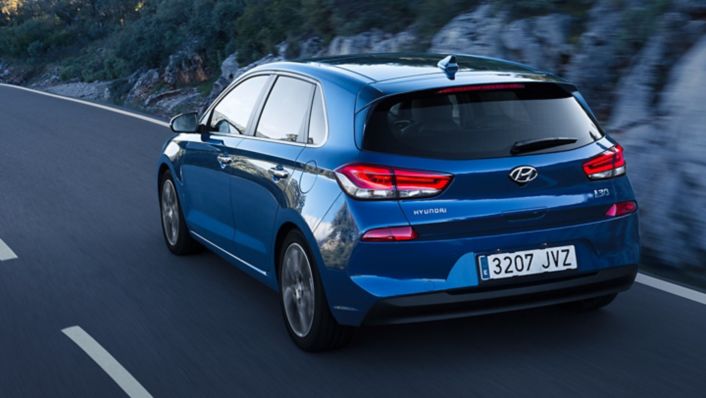
The new turbocharged four-cylinder petrol engine, the 1.4 T-GDi with 140 PS (Fuel consumption combined: 5.5 - 4.8 l/100 km; urban: 6.6 - 5.9 l/100 km; extra-urban: 5.0 - 4.1 l/100 km; CO2 emissions combined: 125 - 109 g/km), proved highly efficient and responsive throughout the drive.
For the i30 powertrains, Hyundai’s downsizing strategy has been applied, offering small displacement downsized turbo-charged engines like the new 1.4 T-GDi to offer high responsiveness and lower consumption to our customers.
As well as offering lots of space for passengers, the interior's floating touchscreen integrates satnav (including LIVE services), media and connectivity features, such as Apple CarPlay and Android Auto. This ensured I didn’t get lost as I made my way back to Marbella with the car.
The New Generation i30 offers the latest active safety features such as Autonomous Emergency Braking, Smart Cruise Control, Lane Keeping Assist System, Driver Attention Alert and Blind Spot Detection as standard. These aspects work together to increase passenger comfort, making each ride enjoyable as well as safer.
After an hour-and-a-half of driving it was time for a change and to test the next i30 model. The powertrain line-up consists of the aforementioned downsized turbocharged engines to enhance efficiency and responsiveness. As well as the four-cylinder 1.4 T-GDi, customers can choose from two other petrol engines (the compact three-cylinder 1.0 T-GDi with 120 PS (Fuel consumption combined: 5.0 - 4.5 l/100 km; urban: 5.8 - 5.4 l/100 km; extra-urban: 4.6 - 4.0 l/100 km; CO2 emissions combined: 115 - 103 g/km) and the four-cylinder 1.4 MPI with 100 PS (Fuel consumption combined: 5.6 - 5.4 l/100 km; urban: 6.8 - 6.6 l/100 km; extra-urban: 4.9 - 4.8 l/100 km; CO2 emissions combined: 130 - 126 g/km)), as well as one four-cylinder 1-6-litre turbo diesel engine with three power outputs (95PS (Fuel consumption combined: 3.8 - 3.6 l/100 km; urban: 4.1 – 4.0 l/100 km; extra-urban: 3.6 - 3.5 l/100 km; CO2 emissions combined: 98 - 95 g/km), 110PS (Fuel consumption combined: 4.1 - 3.4 l/100 km; urban: 4.4 – 3.8 l/100 km; extra-urban: 3.9 - 3.2 l/100 km; CO2 emissions combined: 109 - 89 g/km) and 136 PS (Fuel consumption combined: 4.1 - 3.8 l/100 km; urban: 4.4 - 4.2 l/100 km; extra-urban: 3.9 - 3.6 l/100 km; CO2 emissions combined: 109 - 99 g/km)).
CO2 emissions start from as low as 89 g/km (target value), and mated to each engine is either the six-speed manual transmission or the direct-responding seven-speed dual- clutch transmission.
The New Generation i30 offers the latest active safety features such as Autonomous Emergency Braking, Smart Cruise Control, Lane Keeping Assist System, Driver Attention Alert and Blind Spot Detection as standard. These aspects work together to increase passenger comfort, making each ride enjoyable as well as safer.
After an hour-and-a-half of driving it was time for a change and to test the next i30 model. The powertrain line-up consists of the aforementioned downsized turbocharged engines to enhance efficiency and responsiveness. As well as the four-cylinder 1.4 T-GDi, customers can choose from two other petrol engines (the compact three-cylinder 1.0 T-GDi with 120 PS (Fuel consumption combined: 5.0 - 4.5 l/100 km; urban: 5.8 - 5.4 l/100 km; extra-urban: 4.6 - 4.0 l/100 km; CO2 emissions combined: 115 - 103 g/km) and the four-cylinder 1.4 MPI with 100 PS (Fuel consumption combined: 5.6 - 5.4 l/100 km; urban: 6.8 - 6.6 l/100 km; extra-urban: 4.9 - 4.8 l/100 km; CO2 emissions combined: 130 - 126 g/km)), as well as one four-cylinder 1-6-litre turbo diesel engine with three power outputs (95PS (Fuel consumption combined: 3.8 - 3.6 l/100 km; urban: 4.1 – 4.0 l/100 km; extra-urban: 3.6 - 3.5 l/100 km; CO2 emissions combined: 98 - 95 g/km), 110PS (Fuel consumption combined: 4.1 - 3.4 l/100 km; urban: 4.4 – 3.8 l/100 km; extra-urban: 3.9 - 3.2 l/100 km; CO2 emissions combined: 109 - 89 g/km) and 136 PS (Fuel consumption combined: 4.1 - 3.8 l/100 km; urban: 4.4 - 4.2 l/100 km; extra-urban: 3.9 - 3.6 l/100 km; CO2 emissions combined: 109 - 99 g/km)).
CO2 emissions start from as low as 89 g/km (target value), and mated to each engine is either the six-speed manual transmission or the direct-responding seven-speed dual- clutch transmission.
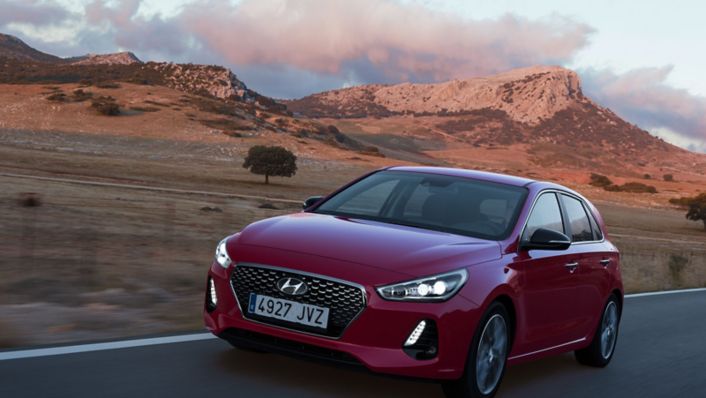
An after-dark press briefing in the i30 beach hut
As the afternoon turned to early evening and the sun set over Marbella’s coastline, we headed to Hyundai’s bespoke beach hut for the New Generation Hyundai i30 Driving Experience press briefing. Here, a number of speakers from Hyundai Motor Europe discussed the new car, as well as Hyundai’s future plans in Europe to the assembled journalists.
Hyundai Motor Europe Vice President Jochen Sengpiehl took to the stage to give an insight into the company’s strategy. 2016 was a record-breaking year for Hyundai in Europe with sales hitting 500,000 for the first time. Hyundai aims to be the number one Asian automotive brand in Europe by 2021 and outlined the company’s 2020 Sustainability Strategy. Hyundai Motor will launch 14 eco-cars by 2020.
Thomas Bürkle, Chief Designer at Hyundai Motor Europe’s Design Centre, explained how his team went about creating the new Cascading Grille, which was inspired by the flow of molten steel.
We were inspired by steel mills where you see the liquid iron flowing down like a waterfall. It’s an evolution of the hexagonal grille, but a more refined design.
Dr Michael Winkler, Head of Powertrain at Hyundai Motor Europe Technical Center, also took to the stage to discuss aspects of the New Generation i30’s engines. Speaking about the all-new 1.4 litre T-GDi with seven-speed DCT, Dr Winkler said:
It is a combination of being a pleasure to drive and is attractive thanks to its low CO2 emissions.
As Hyundai Motor Europe’s new DNA car, the New Generation i30 lived up to its billing by taking to the southern Spanish roads like the proverbial duck to water. With its roomy interior, connected capabilities and range of powertrains, it will appeal to many people, from those with young families to drivers looking for a smart city car. My verdict: the New Generation Hyundai i30 is truly a car for everyone.
Consumption Data*
Gasoline Engines
1.4 MPI (100 PS): Fuel consumption combined: 5.6 - 5.4 l/100 km; urban: 6.8 - 6.6 l/100 km; extra-urban: 4.9 - 4.8 l/100 km; CO2 emissions combined: 130 - 126 g/km
1.0 T-GDi (120 PS): Fuel consumption combined: 5.0 - 4.5 l/100 km; urban: 5.8 - 5.4 l/100 km; extra-urban: 4.6 - 4.0 l/100 km; CO2 emissions combined: 115 - 103 g/km
1.4 T-GDi (140 PS): Fuel consumption combined: 5.5 - 4.8 l/100 km; urban: 6.6 - 5.9 l/100 km; extra-urban: 5.0 - 4.1 l/100 km; CO2 emissions combined: 125 - 109 g/km
Diesel Engines
1.6 CRDi (95 PS): Fuel consumption combined: 3.8 - 3.6 l/100 km; urban: 4.1 – 4.0 l/100 km; extra-urban: 3.6 - 3.5 l/100 km; CO2 emissions combined: 98 - 95 g/km
1.6 CRDi (110 PS): Fuel consumption combined: 4.1 - 3.4 l/100 km; urban: 4.4 – 3.8 l/100 km; extra-urban: 3.9 - 3.2 l/100 km; CO2 emissions combined: 109 - 89 g/km
1.6 CRDi (136 PS): Fuel consumption combined: 4.1 - 3.8 l/100 km; urban: 4.4 - 4.2 l/100 km; extra-urban: 3.9 - 3.6 l/100 km; CO2 emissions combined: 109 - 99 g/km
*Depending on trim and tire specifications.

